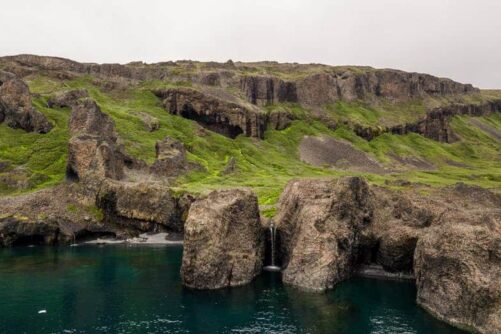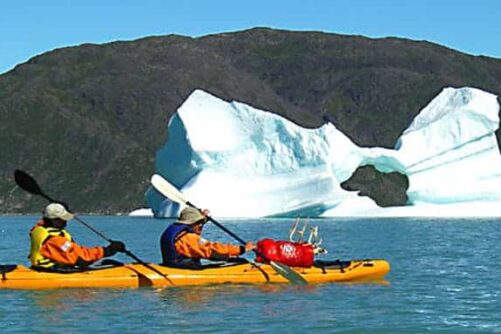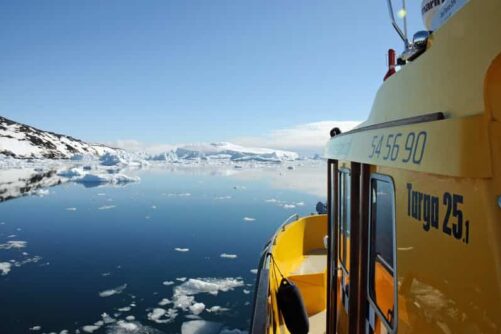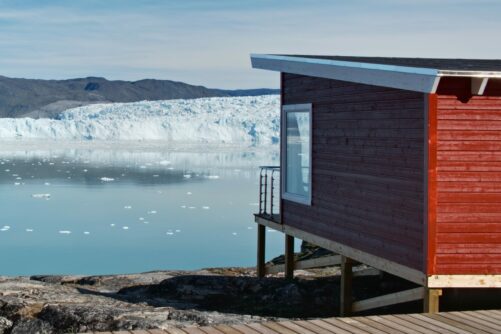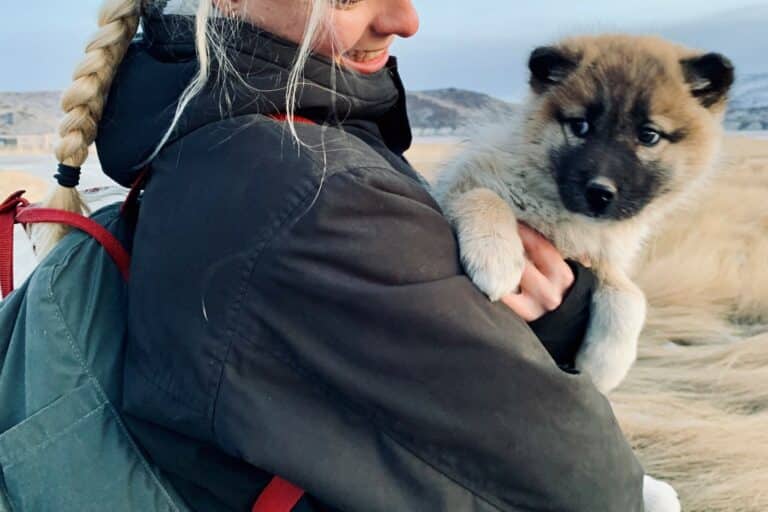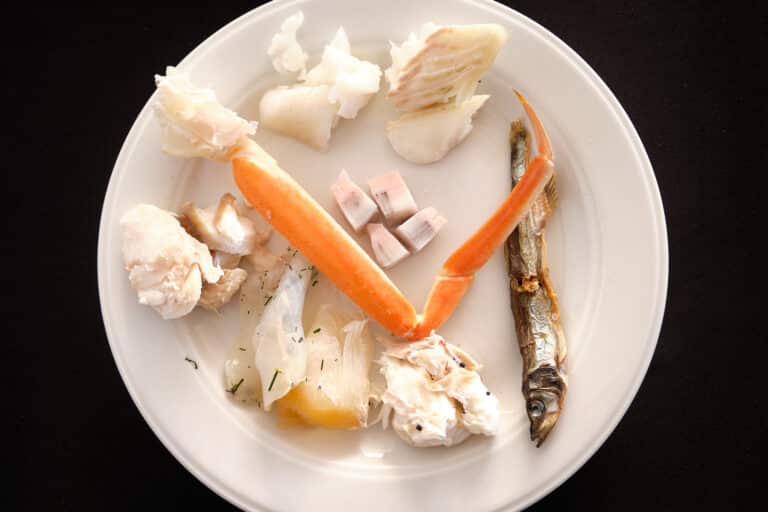

Polar bears at their Arctic Kingdom
Published: 16/06/2020
Reading time: 5 minutes
Better known in some regions as “the king of the arctic”, the Latin name of polar bear is “ursus maritimus”, which basically means “bear from the sea”. In kalaallisut, we call it “nanoq”. There are 19 populations of polar bears and 8 of them are vulnerable, so extinction is a real possibility, even when they are the largest species of bear in the world. The number of polar bears around the world has been estimated at 25 to 30,000.
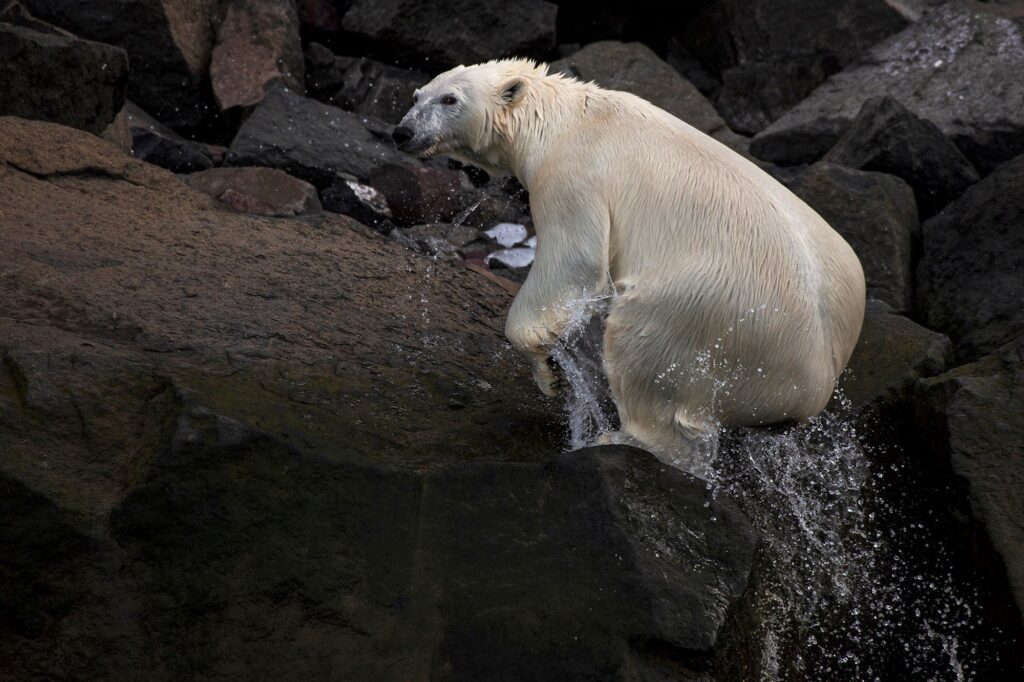
They can make seasonal migrations of up to 4,000 km. They live in Alaska (USA), North Canada, Greenland, Svalbard Archipelago and Russia, having a circumpolar distribution. Polar bears can live up to 25 years and they either stay in areas with sea ice almost all year round, or wait in land during the summer, when the sea ice melts.
They need sea ice to hunt for seals, and therefore they are in danger due to climate change, now that sea ice is melting rapidly during the summer and does not freeze enough during the wintertime and the ice field floods, leaving no surface to hunt.
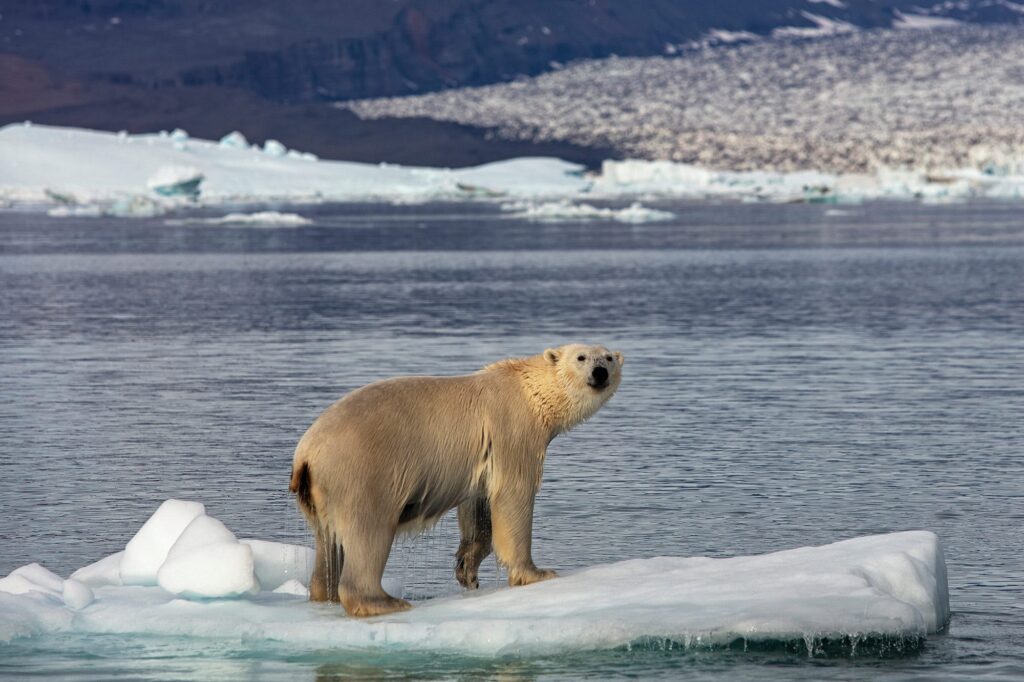
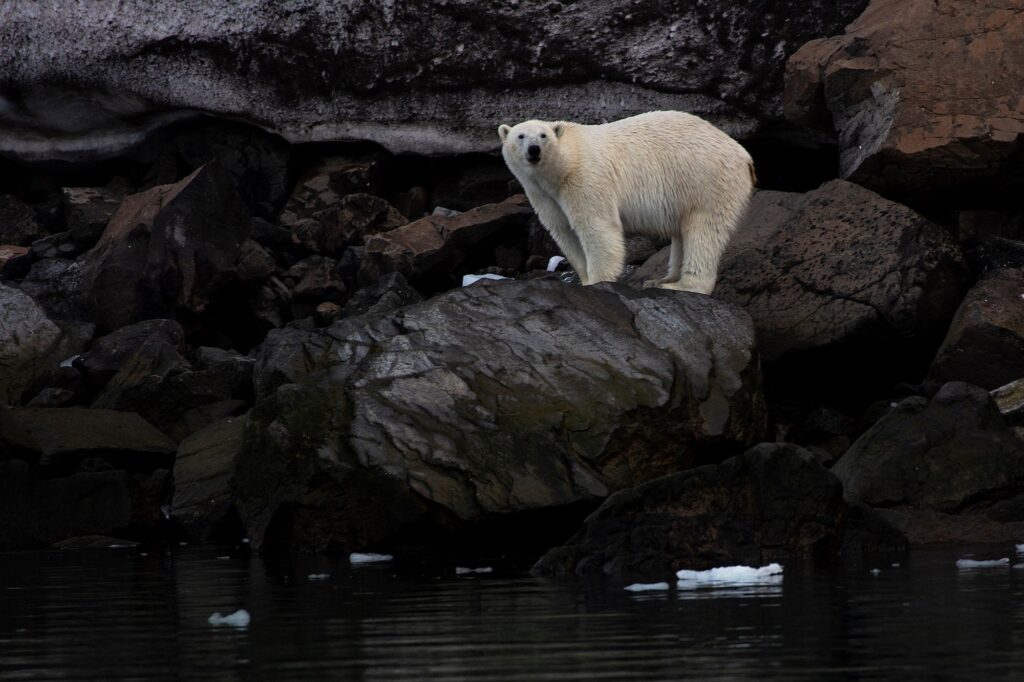
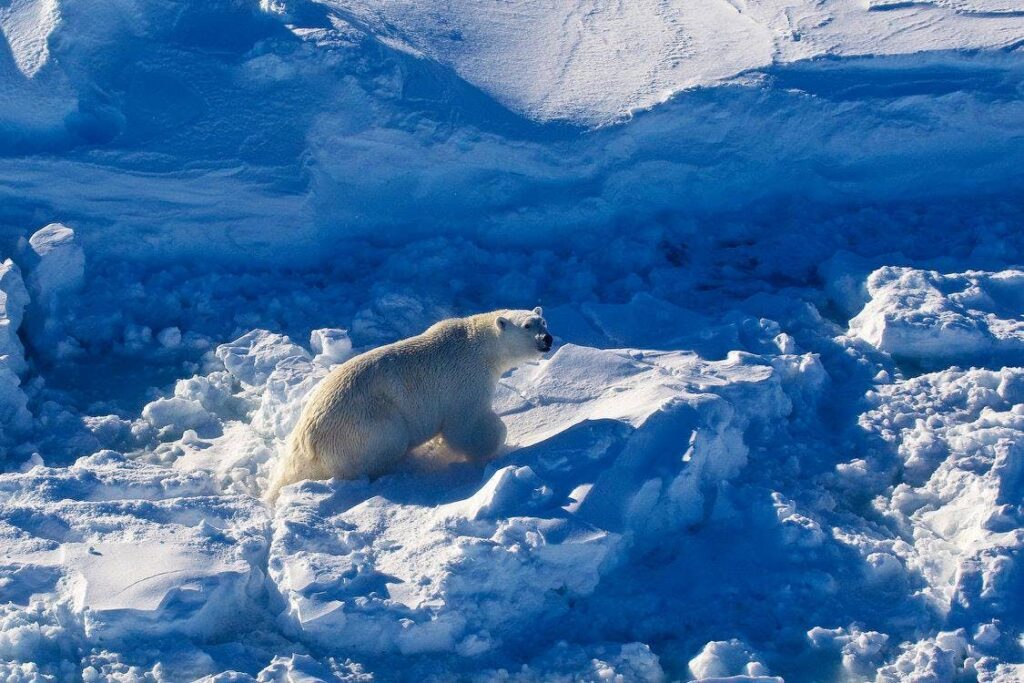
Among to this, PCBs and many other toxic substances, pollute the sea and contaminate the arctic ecosystem, threatening arctic life. In the Arctic Circle’s ecosystem, these carnivorous polar bears head the food chain because they have no other predators. They are nimble and excellent long-distance swimmers, using their forepaws as paddles. “Ice bears” enjoy being alone as much as they enjoy a big seal; they can eat up to 60 kilos of meat (mainly blubber) during a single meal. Blubber is important for insulations because it comprises lipids.
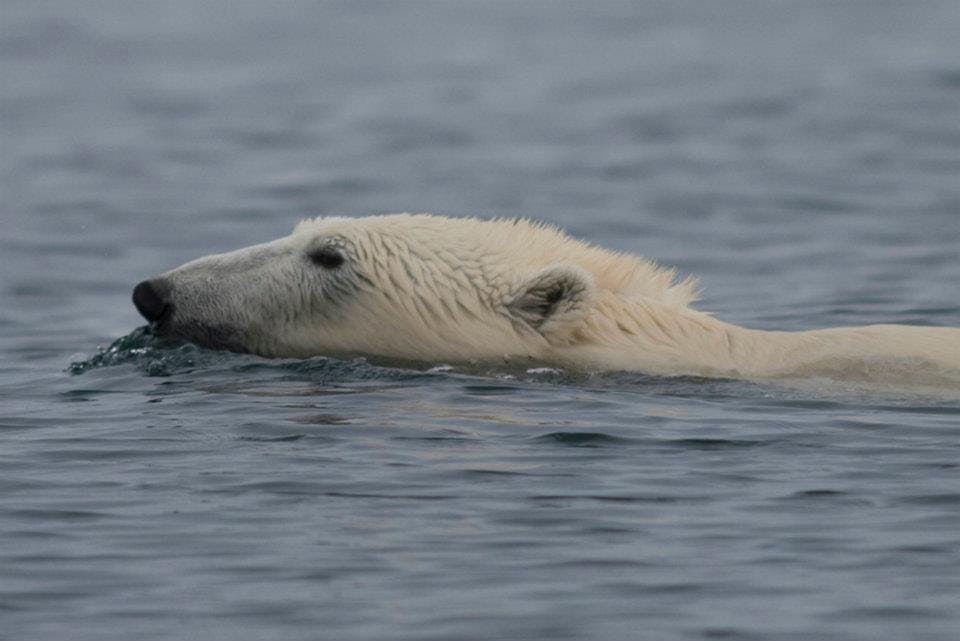

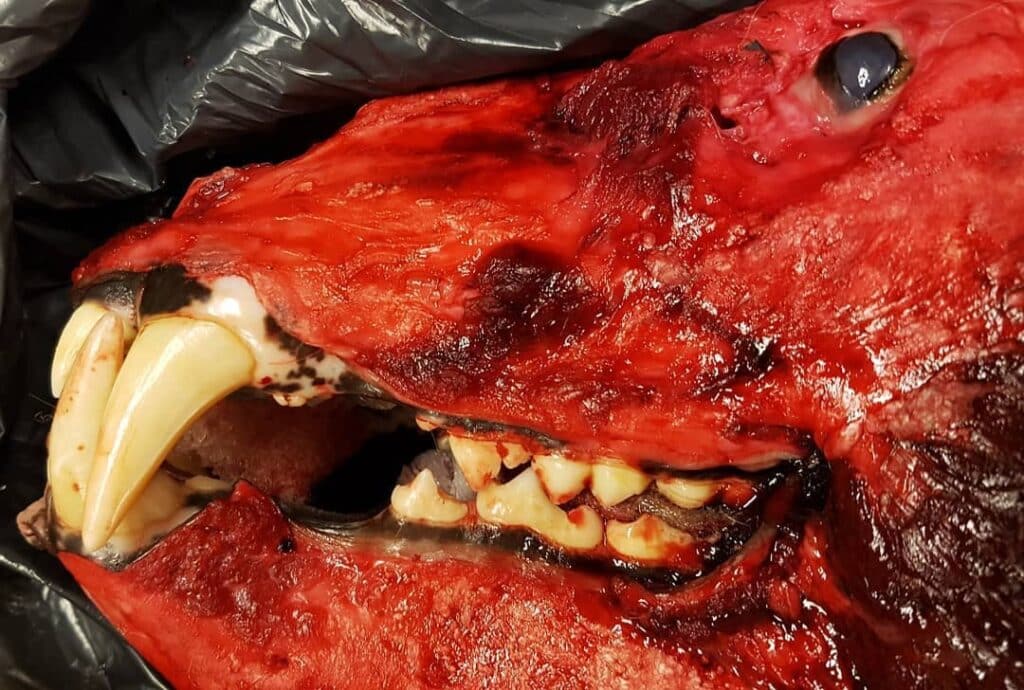
Compared to other bears, these big whitish mammals have a small tail, small and narrow head, small, round and furred ears, 42 long and sharp teeth, short, black and strong claws, black snout, black eyes and black skin; yes, black skin! The black skin absorbs more sunlight and keeps it warm, plus they also have a thick layer of fat beneath the skin that measures a bit more than 10 cm.
Between the black skin and the fur, there is an underfur layer up to 5cm long comprised by wavy guard hairs trapping air and protecting their body when they are underwater. The outer layer of the coat is the transparent and hollow hair (appearing yellowish – whitish) that measures approximately 15cm. They can overheat while running (achieving 40km/h), instead of suffering hypothermia at anytime of the year.
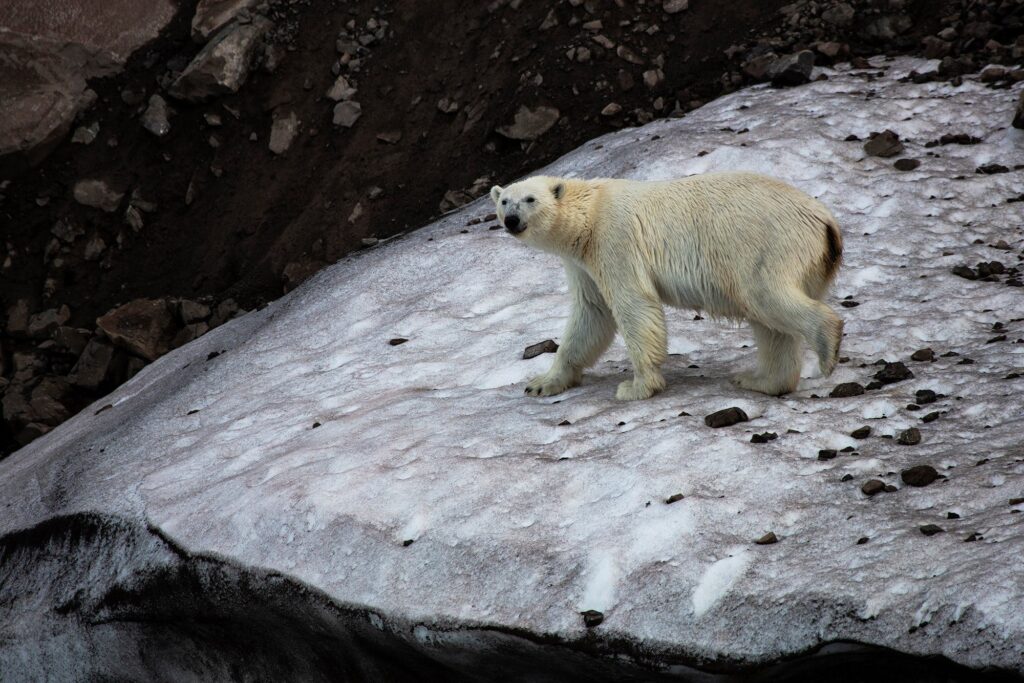

Polar bears feed on seals (bearded, ringed and harp seals), bird eggs, sea birds, beached whales, baby walrus, and reindeer, or carrion when they turn into scavenging after being bad on hunting seals. They need ice to catch seals, that is why during the summer, they retreat to the glaciers when there are not enough floes in the ice.
Adult bears can sniff a seal through a meter of snow or ice. Seal calves are polar bear’s favorite prey, and no matter the seal, bears eat mostly seal’s skin and blubber, which is rich in calories and polar bear’s body digests fat very efficiently.
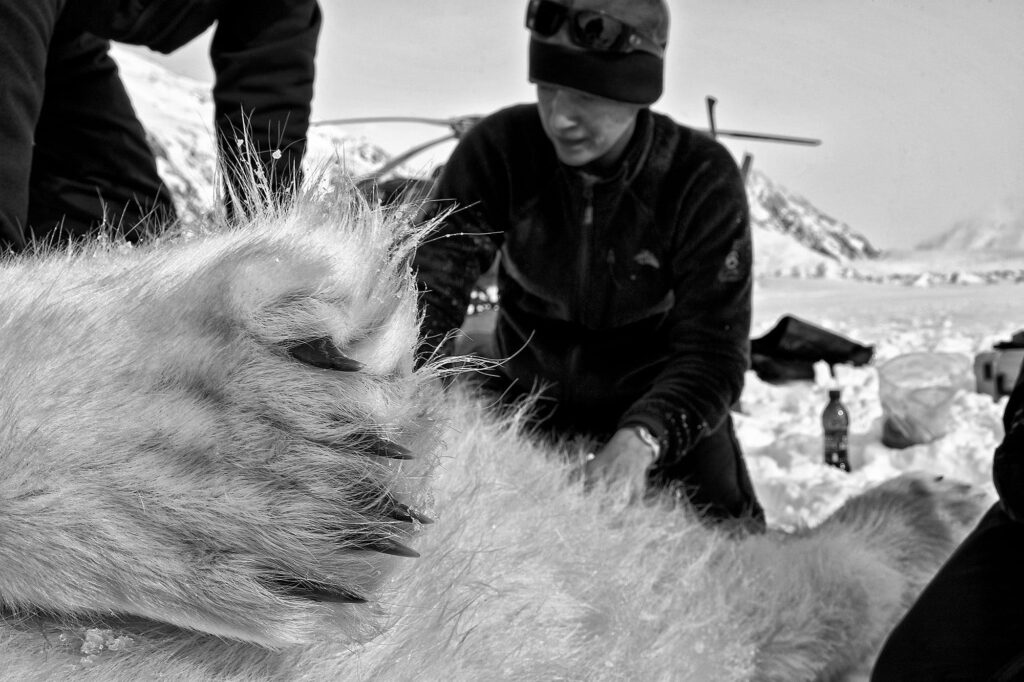
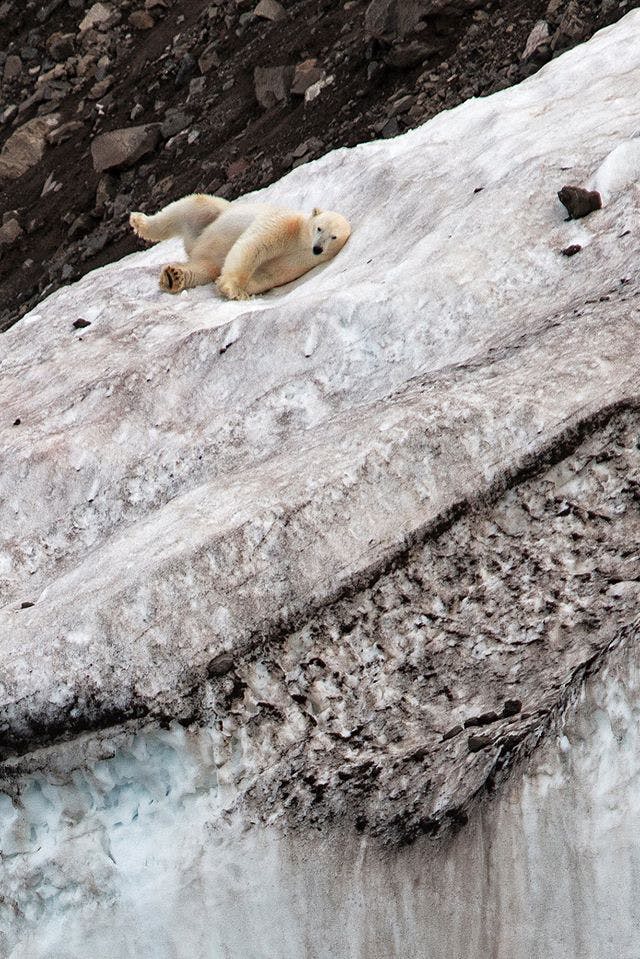
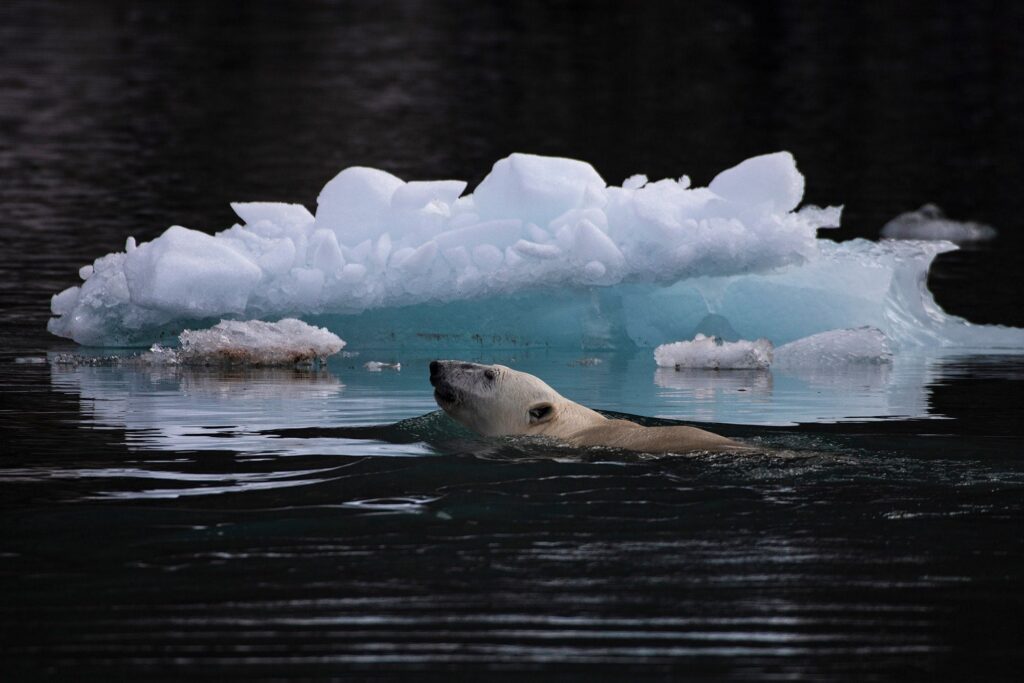
Males and females can be distinguished. Males have larger and more powerful necks apparently larger than their heads. The weight of a male adult varies from 300 to 850 kg, depending on the season, and a female can gain between 150 to 350 kg. When food is scarce, they can live on stored fat for up to 8 months.
Mating season is between April and May, when males fight for a female, but these fights rarely have a fatal ending, just a huge broken heart. The couple stay together for a few weeks before they leave each other and start hunting during the summer. Female’s pregnancy lasts 4 months, so the bear needs to feed heavily to increase her fat. Pregnant bears dig their dens during the autumn, going into a winter sleep, saving energy and get ready to give birth at the end of the year, staying in the den almost the whole winter. She can give birth up to 4 cubs, but generally they have only 2.
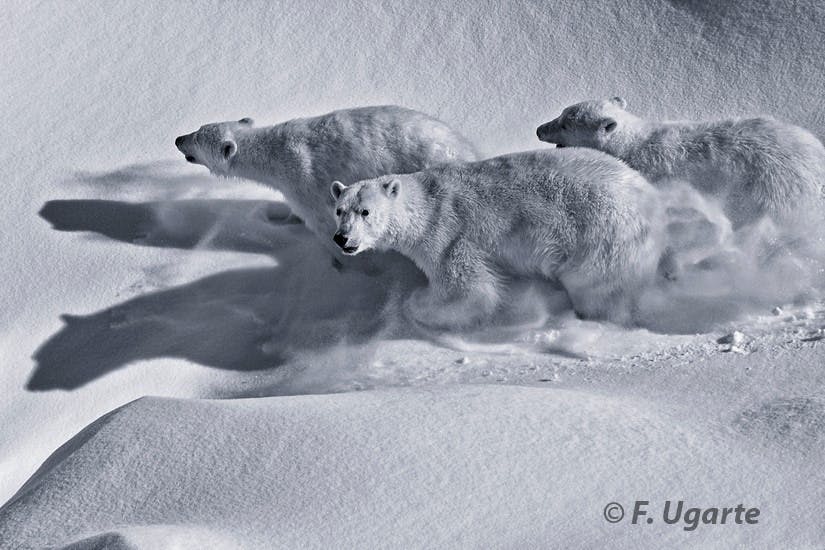
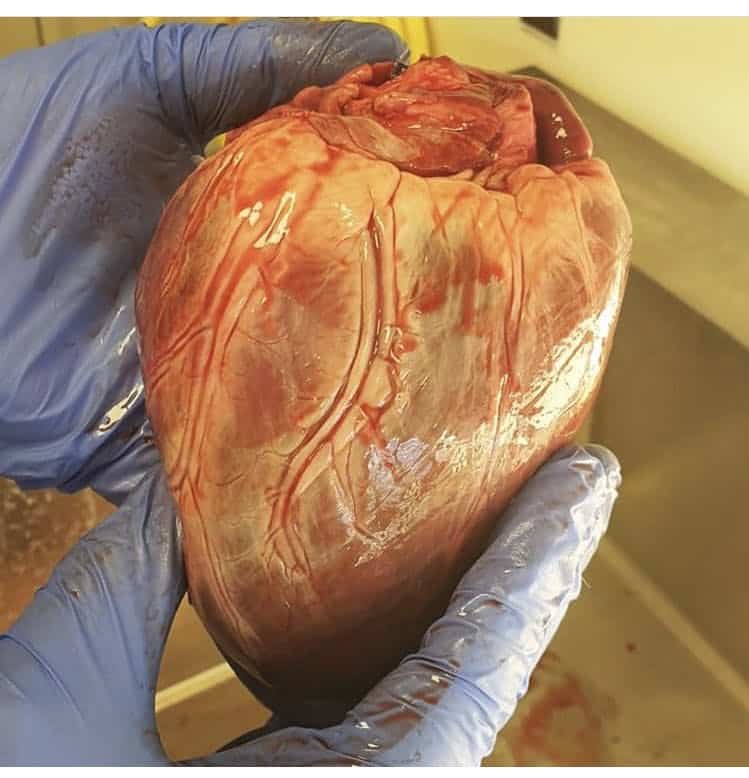
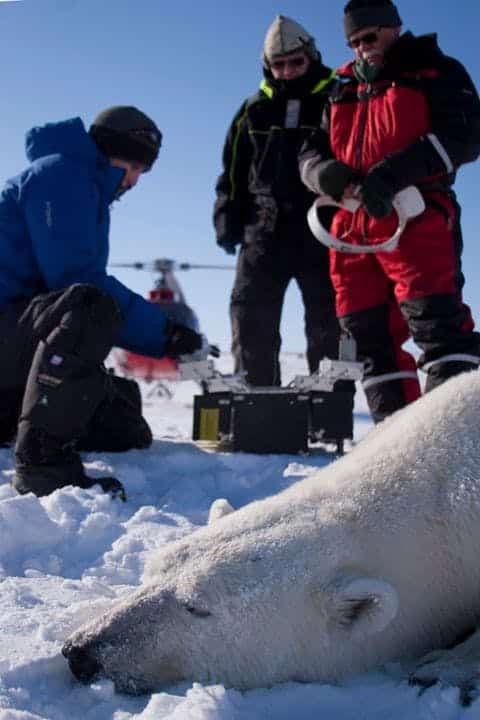
The average weight of polar bear cubs at birth is between 500 and 700 grams. Mother milk contain more than 40% of fat, so they can attain up to 3 kilos in the first month. Cubs stay with their mother in the den until the Easter, when the midnight sun has started and they are ready to follow her mother, roaming, playing and training how to hunt, weighing around 10 kilos. After 2 years and a half, juvenile bears have grown enough to separate and start hunting alone. Unfortunately, if they are not good hunters, they won’t survive more than 2 years roaming alone.
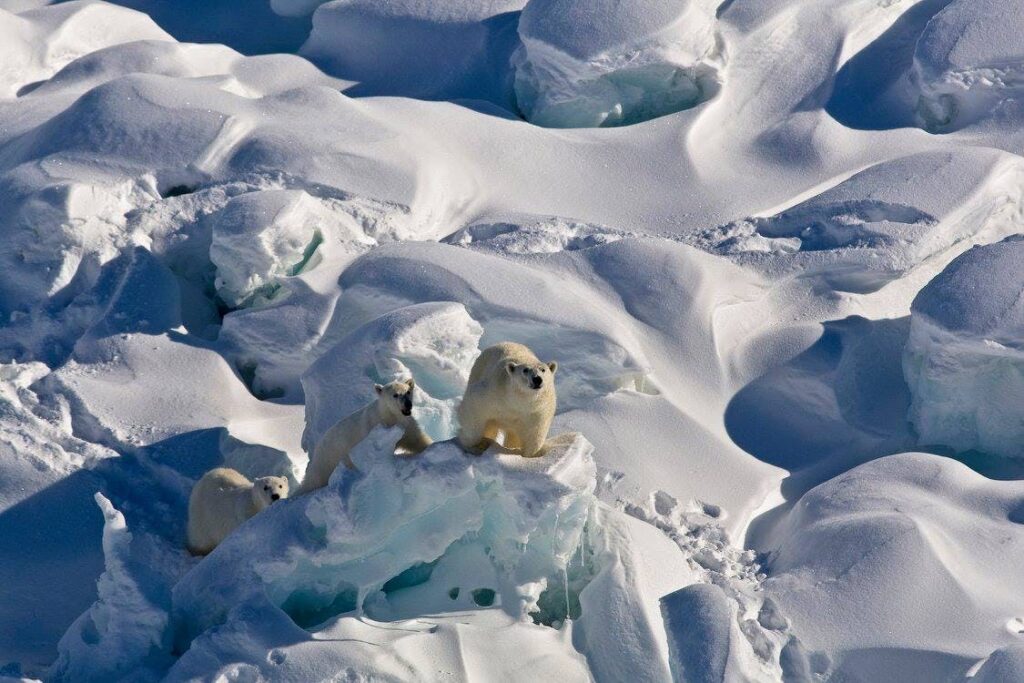
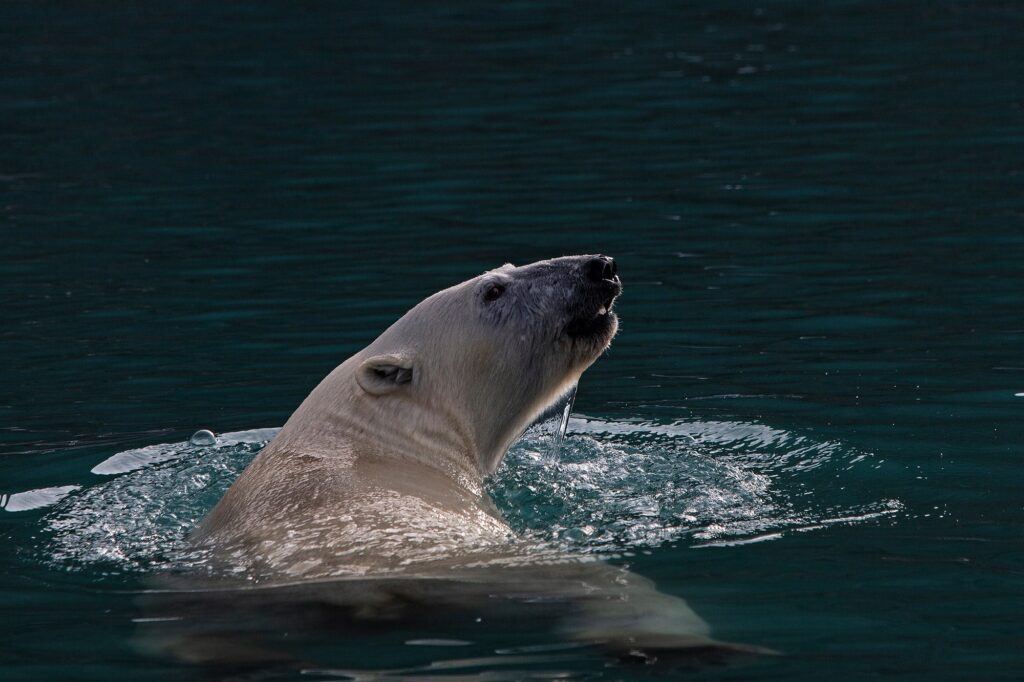
Males usually mate when they are 8 – 10 years old, while females mate younger, when they are 5 years old. Females can give birth every 3 years, and males can mate several times in a season. Since female bears have narrow necks, it is possible to tag them and gather information of how much they move, where they go and stay in every season, etc., So, the information the researchers provide are mostly based in females life.

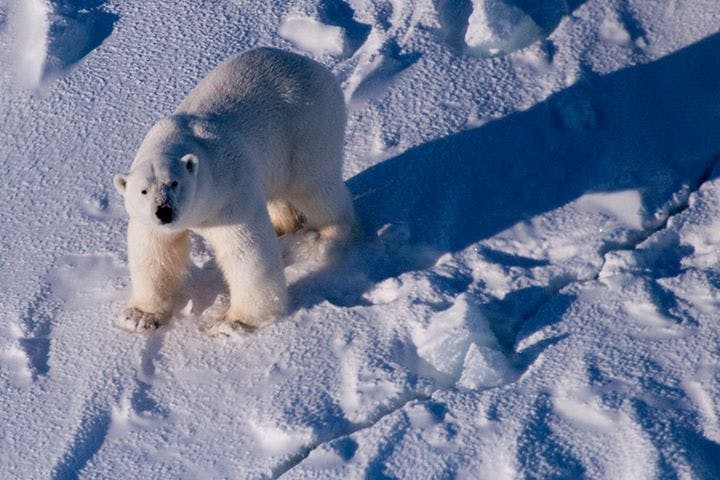


Scientists tag polar bears either with GPS ear tags or radio collars for tracking their movements or tracing them. It is easier to put a collar on adult females since their neck is narrow, while adults male’s neck is wider, and they can take off the collar with their claws, or it can slip off. This means that most of the collected information about polar bears are from adult female bears.
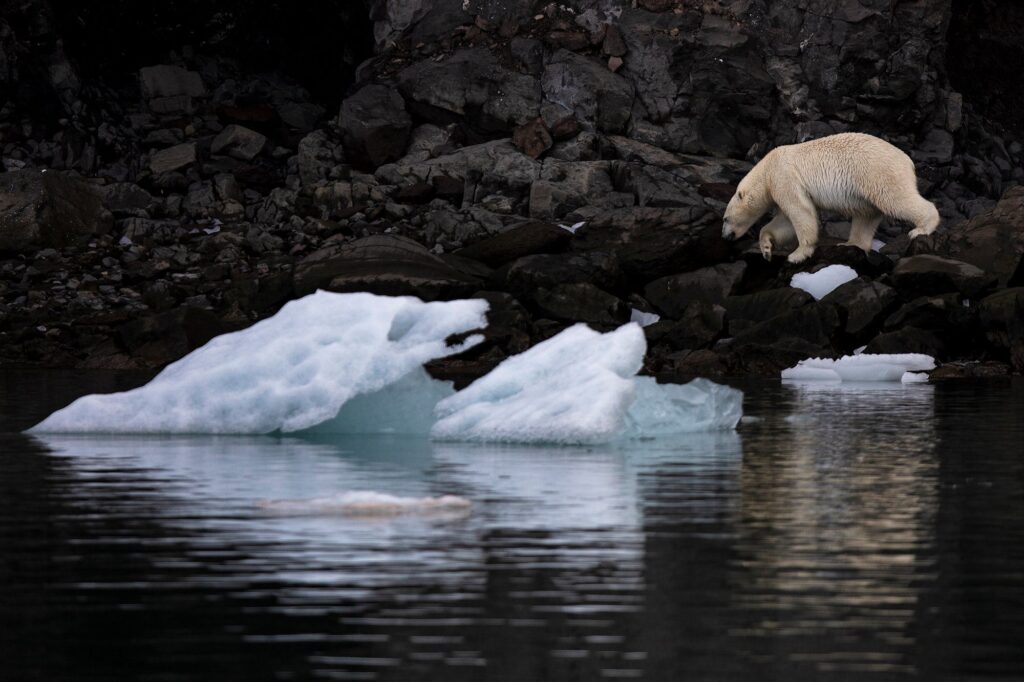
If you happen to see a polar bear, it could be as scary as unforgettable, but nevertheless you will be extremely happy to find them enjoying their habitat now that they are still reigning the mesmerizing arctic.
*All pictures are from Fernando Ugarte, Head of department of birds and mammals at Greenland Institute of Natural Resources.
VIDEO BY @ANDERKLA – 2015
Read more travel blogs from Gabriela Zendejas Maldonado
-

Kuannit Hike | Qeqertarsuaq | Disko Bay
Tour startsQeqertarsuaqDuration4 hoursFrom 595 DKKSee more -

Winter In Ilulissat | 5 Days | Disko Bay
Tour startsIlulissatDuration5 daysFrom 5500 DKKSee more -
Including flights from Iceland

Tasiilaq Winter World | 8 Days | East Greenland
Tour startsTasiilaqDuration8 daysFrom 29650 DKKSee more -
4.86(22)

Nuuk Icefjord | Nuuk
Tour startsNuukDuration6 hoursFrom 2195 DKKSee more -
Flights included!

Hike and Kayaking | South Greenland
Tour startsFrom Copenhagen From IcelandDuration8 daysFrom 21400 DKKSee more -

Whale Watching | Uummannaq | North Greenland
Tour startsUummannaqDuration4 hoursFrom 1100 DKKSee more -
5.00(3)

Chasing the Northern Lights | Ilulissat | Disko Bay
Tour startsIlulissatDuration2 hoursFrom 395 DKKSee more -
New tour

Dog sledding tour to the UFO cabin | Sisimiut
Tour startsSisimiutDuration4 hoursFrom 2100 DKKSee more -
1 To 6 Passengers Included

Sea Fishing | Private tour | Ilulissat | Disko Bay
Tour startsIlulissatDuration4 hoursFrom 7700 DKKSee more -
Up to 47 passengers

Bus service | Nuuk
Tour startsNuukDuration1 hourFrom 1300 DKKSee more -

Hike To Garnet Rock | Kangerlussuaq | West Greenland
Tour startsKangerlussuaqDuration8 hoursFrom 950 DKKSee more -
1 to 6 passengers included

Iceberg Classic | Ilulissat | Disko Bay
Tour startsIlulissatDuration2 hoursFrom 4000 DKKSee more -
4.75(8)

Closed boat Fjord Adventure | Nuuk
Tour startsNuukDuration2 hoursFrom 850 DKKSee more -

Narsarsuaq Easy 4 days Package | South Greenland
Tour startsNarsarsuaqDuration4 daysFrom 5200 DKKSee more -
New Tour!

Disko Island Kayak Exploration | Qeqertarsuaq | Disko Bay
Tour startsQeqertarsuaqDuration3 hoursFrom 1350 DKKSee more -

10 days of hiking through Arctic nature & villages | East Greenland
Tour startsFrom IcelandDuration10 daysFrom 35700 DKKSee more -
1-10 people included

Boat charter | Open Boat | Qasigiannguit | Disko Bay
Tour startsQasigiannguitDuration2 hoursFrom 1600 DKKSee more -
5.00(1)

UTV Glacier Expedition | Ilulissat – Ilimanaq | Disko Bay
Tour startsIlulissatDuration8 hoursFrom 3495 DKKSee more -

A 2-Day Arctic Luxury Escape at Eqi Glacier | West Greenland
Tour startsIlulissatDuration2 daysFrom 5450 DKKSee more

